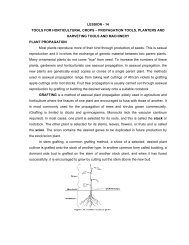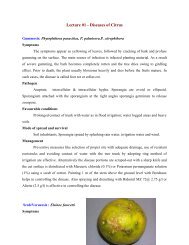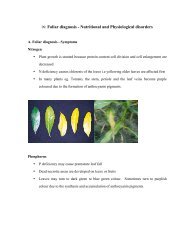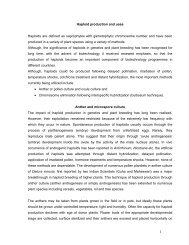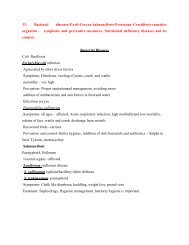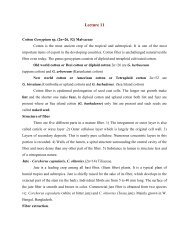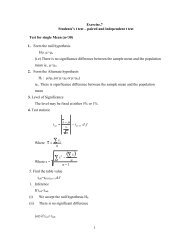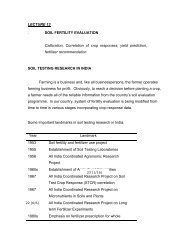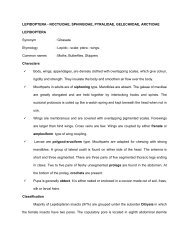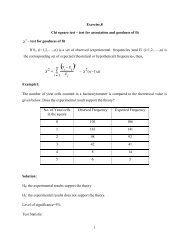Ph.D Programs in Agricultural Microbiology
Ph.D Programs in Agricultural Microbiology
Ph.D Programs in Agricultural Microbiology
Create successful ePaper yourself
Turn your PDF publications into a flip-book with our unique Google optimized e-Paper software.
Outcome<br />
microbial diversity <strong>in</strong> various natural environments <strong>in</strong>clud<strong>in</strong>g extreme<br />
After com plet<strong>in</strong>g<br />
environments such as hyperthermal, hypersal<strong>in</strong>e, and anoxic habitats<br />
•Evaluate approaches to isolate, cultivate, and classify<br />
prokaryotic microorganisms<br />
•Use aerobic and anaerobic techniques to isolate and<br />
cultivate prokaryotes from natural and man-made environments<br />
•Analyze DNA sequences to identify prokaryotes us<strong>in</strong>g<br />
molecular databases and phylogenetic software 2.3. AGM 608<br />
Advanced Methods for Identification of Microorganisms (2 + 1)<br />
Objective To understand basic conce<br />
microorganisms <strong>in</strong> conjuction with advancements <strong>in</strong> identify<strong>in</strong>g<br />
and classify<strong>in</strong>g them.<br />
To update students<br />
tools <strong>in</strong> phylogeny and identification of microbes. Unit I M olecular<br />
cod<strong>in</strong>g and energy generation –orig<strong>in</strong> of modern eukaryotesevolutionary<br />
chronometers- Ribosomal RNA sequences and cellular<br />
evolution. General pr<strong>in</strong>ciples of classification- - International Code<br />
of Nomenclature of Bacteria-major developments <strong>in</strong> bacterial<br />
classification- classification of prokaryotic organisms and concept of<br />
bacterial speciation –Etymology <strong>in</strong> nomenclature of prokaryotes.<br />
Unit II M orphological,<br />
biochemical, metabolic, enzymic, reproductive and molecular<br />
biological features for del<strong>in</strong>eat<strong>in</strong>g prokaryotes from eukaryotes,<br />
bacteria from archaea and Gram - ve bacteria from Gram+ve<br />
bacteria- Isolation and characterization of anaerobes and<br />
extrmophiles. Unit III<br />
Biochemical techniques: Instrumentation of GC/ Gs-MS - Cellular<br />
fatty acid analysis (CFA), prote<strong>in</strong> profile by SDS-PAGE, isozyme<br />
pattern and zymogram analysis- Molecular taxonomy: GC content,<br />
DNA / DNA hybridization, DNA/ RNA hybridization, 16S rRNA<br />
sequence analysis –DNA f<strong>in</strong>ger pr<strong>in</strong>t<strong>in</strong>g. Unit IV<br />
Electrophoresis (PFGE), Restriction Fragment Length<br />
- M odern approaches to c<br />
Pulsed Field G e



